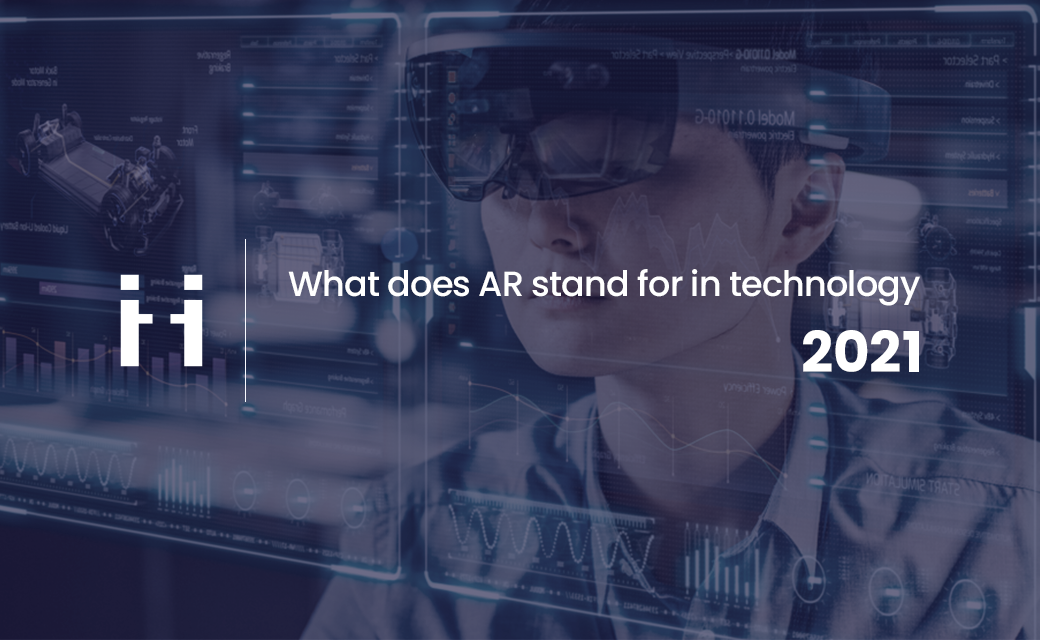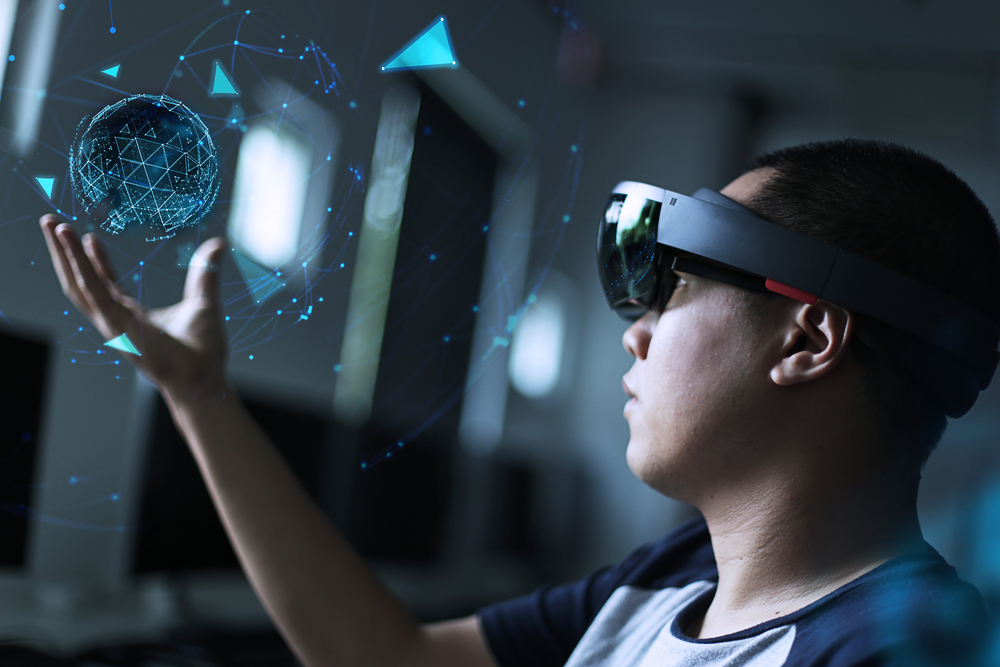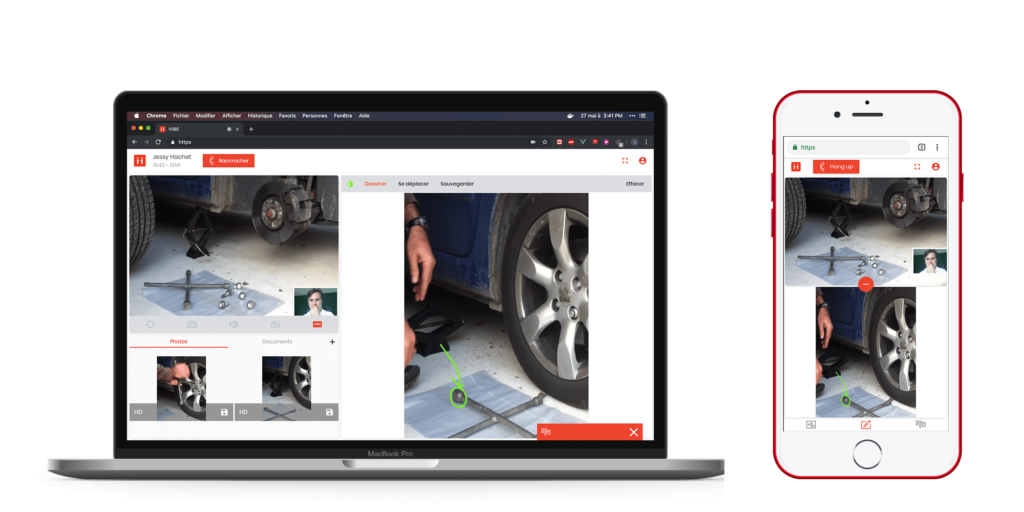
Share this article
Share this article
Augmented Reality (AR) is a technology that adds digital images to the live view on a screen. This is often done using the camera or live video feed on a smartphone or tablet.
AR is not to be confused with virtual reality (VR), which immerses gamers in a virtual environment completely separate from the real world. Some also differentiate between Augmented Reality and Mixed Reality. One could define Augmented Reality as the overlay of information onto a digital screen, thereby maintaining the essence of the real world but enhancing it with digital elements. Mixed Reality, on the other hand, allows users to interact with both the real-world and virtual elements. In this article, we will equate the two for simplicity’s sake.
The different kinds of reality technology all are based around the idea of a human user interacting with a visual interface. So what does AR stand for in technology? Here are some examples.
While some may think of Google’s original Google glass project, Augmented Reality hardware has progressed substantially since 2013. Today, many companies use AR in a wide variety of use cases. Microsofts Hololens is a “mixed reality” wireless head mounted display that projects a holographic image onto a transparent screen. Hololens is aimed at business users and is customizable for various industries including manufacturing, education, and even surgery. At $3,500, the device still remains out of reach of many.
Smartphones are slowly integrating AR hardware into their devices. Hardware improvements will lead to new opportunities for AR software, such as helping architects and engineers enhance digital models. Software is an equally important component of AR that can also be incorporated into existing technologies. AR apps are now available on many smartphones and tablets. AR-enabled apps have been used both by consumers and by businesses for external and internal uses. Google is adding AR functionality to its Google Maps software. ViiBE has integrated AR features to its video call software such as a red laser pointer that can be superimposed on the live video feed to better guide the other call participant(s).
Head-up displays are a more basic form of AR that has existed in the automotive sector for over two decades. A head-up display projects the current speed and sometimes navigational directions on a transparent surface or the windscreen. As autonomous cars become closer to reality, recent concept cars like the BMW Next 100 Concept suggest an expansion of AR applications in automobiles.
Augmented reality (AR) is a heightened version of the real physical world. These enhancements are achieved by using digital images, sounds, or other sensory elements. The elements are integrated into live images on technical devices. Using AR is increasing in popularity, particularly in technical assistance and mobile computing applications.
The difference between Augmented Reality (AR) and Artificial Intelligence (AI) is that AR enhances the real-life experience of humans, while AI helps computers and machines act intelligently.
AI uses data and algorithms for machine learning and deep learning. AR seeks to combine digital objects with the physical environment so that computer-generated elements mix with the real world.
Virtual Reality (VR) is a simulated, computer-generated experience that includes views and objects that appear to be real. Users feel immersed in the virtual world as if that is their real surroundings. Typically, virtual reality systems use VR headsets to immerse users in these digital environments.
AR systems are broken into three main components: the hardware, the software, and the application. AR uses sensors to sense the environment in real-time and then relays it back to the processor and graphic processing unit (GPU). The software then interprets the data and calculates how to project images onto a transparent surface in the user’s line of sight. In the future, most processing of this digital information will be done in the cloud, which will facilitate connections to artificial intelligence databases.
Different augmented reality apps combine the real and virtual worlds in different ways. For example, the groundbreaking game Pokémon Go combines the real world with virtual characters. Ikea offers an augmented reality app to help prospective customers visualize new furniture in their home before purchasing. In contrast to consumer apps built upon existing technology, AR-specific hardware like Microsoft Hololens offers business customers more capabilities for processor-intensive uses like engineering or industrial design.
As the hardware and software rapidly evolve and old technology becomes obsolete, ViiBE’s webapp allows AR-enabled video calls without any installation necessary. It seamlessly integrates into existing AR hardware like RealWear. When the time comes to upgrade, ViiBE’s web app will be ready from day one.

AR technologies have many benefits for business users. A customer with car trouble can call a mechanic who will guide them through a repair in real-time without requiring a visit to the garage. As another example, a technician repairing offshore equipment can consult with an expert via video, all while keeping their hands free to focus on their job.
AR is an emerging technology that could see massive growth in the future. Getting on board now could mean getting ahead of your competitors. Apple’s iPhone 12 includes a LiDAR scanner which can turn scans of objects in the physical world into 3D digital objects. This increased support for AR-apps will likely be expanded by future products. Apple is currently designing its own AR glasses. If they can get it right, there could be a massive increase in the potential market for augmented reality products and services.
Remote assistance AR can build value in field service, customer service, and even human resources. By cutting down on-site trips, AR can help boost your productivity. If you want to go a step further, look to proven software solutions like ViiBE. ViiBE’s video call software helped air-conditioner manufacturer Daikin reduce on-site trips by 46%.

As with any emerging technology, many companies are still figuring out how to implement AR effectively. AR still sometimes seems like a nebulous concept. Given the high price of AR equipment, how can you ensure your company will get a return on investment? Depending on your use case, you might not need specific equipment at all. ViiBE’s AR software integrates into existing smartphones as well as specialized headsets.
AR software such as ViiBE could be a great technology to improve your knowledge management by facilitating access to a centralized knowledge base. You could use AR both for training employees and for allowing them instant access to your knowledge base on the job.
Another possible use is instantly connecting employees to expert guidance who can monitor their activity and instruct them via video. ViiBE’s ticketing solution and knowledge management tool can combine these uses by allowing you to access past interactions for training purposes.
Finally, you can use AR to help sell your product or service. Whether in a showroom or as a smartphone app, AR has been successfully implemented in retail uses. AR can even be used as a marketing tactic to attract potential customers who are curious to interact with this groundbreaking technology.
While AR-enabled apps will likely become ubiquitous, especially with the proliferation of LiDAR sensors on phones, dedicated AR devices remain out of reach for many. Hardware costs will start to drop once data processing can be handled in the cloud. As proof of the trend towards 5G, the Hololens will be available with 5G starting this fall. Still, while 5G internet is quickly becoming a reality in many global cities, the rollout of 5G networks has yet to reach much of the planet. 5G networks must become more widely accessible to achieve the necessary connection speeds. While AR hardware may take longer to achieve mass adoption, technology like ViiBE is reducing the barriers to entry to AR software.
Augmented reality is a promising technology that could revolutionize how we do business and how we see the world. Perhaps one day, AR will become as prevalent as digital maps. We may even have trouble navigating the existing environment without it. In the meantime, ViiBE’s AR functionalities are platform-agnostic, which means you can use them today whether you’re working on a smartphone or specialized AR equipment. Its call solutions are installation-free and integrate easily into existing call center systems like Zendesk and Microsoft Dynamics.